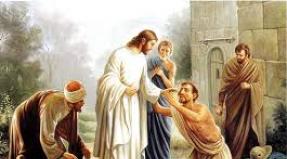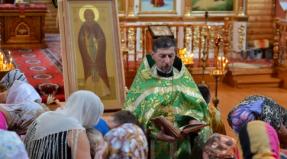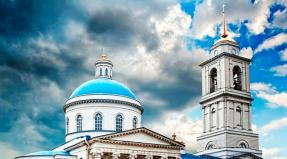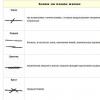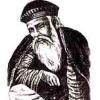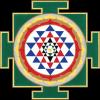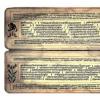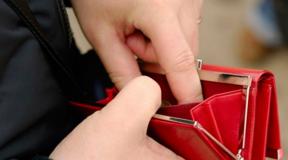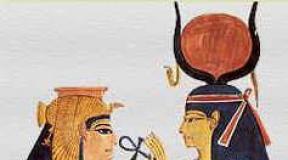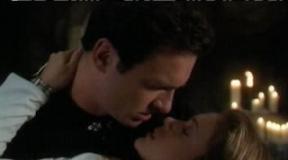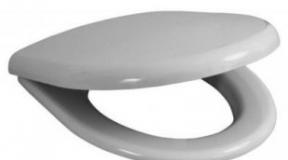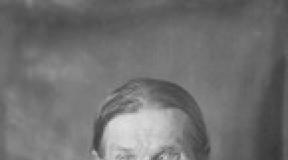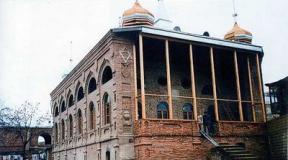Beheading of Saint John the Forerunner of the Baptist. The beheading of John the Baptist
The beheading of John the Baptist - a holiday that the Orthodox Church honors and celebrates on September 11 (August 29, old style).
The Holy Church honors John the Forerunner above all the saints after the Mother of God.
The beheading of John the Baptist: how it was
The Gospels of Matthew (Matthew 14: 1-12) and Mark (Mark 6: 14-29) narrate about the martyrdom of the Forerunner of the Lord in the year 32 after the Nativity of Christ. However, the Holy Tradition of the Apostolic Church has preserved some of the details of these events that took place shortly before the Crucifixion and Resurrection of Christ.
After the death of Herod the Great, the Romans divided the territory of Palestine into four parts and, in each part, appointed their protege as ruler. Herod Antipas received from Emperor Augustus to rule Galilee. He had a legal wife, the daughter of the Arabian king Arefa. Herod left her and cohabited with Herodias, his brother's wife. The Prophet John repeatedly denounced him, but the king did not dare to harm him, since he revered John the Baptist as a prophet and was afraid of the people's anger. Yet Saint John the Baptist was thrown into prison by King Herod (Luke 3, 19-20).
On his birthday, Herod made a rich feast, at which Salome, the daughter of Herodias, danced in front of the guests. She pleased Herod so much with this that he swore before the guests to give her whatever she asked. Salome went to her mother for advice. Herodias taught her daughter to ask for the head of St. John the Baptist. Herod was saddened: he was afraid of the wrath of God for the murder of the prophet, but he could not break an imprudent oath.
John the Baptist's head was cut off and given to Salome. According to legend, the head continued to denounce Herod and Herodias. Furious Herodias pierced the tongue of the prophet with a pin and buried her head in an unclean place. But Joanna, the wife of the king's housekeeper Khuza, secretly took the holy head, put it in a vessel and buried it on the Mount of Olives, in one of Herod's estates. The body of St. John the Baptist was taken by his disciples and buried.

God's wrath fell upon those who decided to destroy the prophet. Salome crossed the Sikoris River in winter and fell through the ice. She hung her body in the water, and her head was above the ice. Just as she once danced with her feet on the ground, now, as if dancing, she made helpless movements in the icy water. So she hung until sharp ice cut her neck. Her head, cut off by a sharp ice floe, was brought to Herod and Herodias, as they once brought them the head of John the Baptist, but her body was never found. The Arabian king Aref, in revenge for the dishonor of his daughter - the wife of Herod the four-ruler - moved his troops against the wicked king and defeated him. The Roman emperor Gaius Julius Caesar Caligula (37-41) in anger exiled Herod along with Herodias to imprisonment in Gaul, and then to Spain. There they were swallowed up by the open earth.

The first finding of the head of John the Baptist
Many years after the execution of John the Baptist, when the land in which the vessel with the holy head of the Forerunner rested, passed into the ownership of the pious nobleman Innocent, this vessel was found during the construction of the church, Innocent learned about the greatness of the shrine by the miracles and signs that happened during this time. But before his death, fearing that the shrine would not be desecrated by the Gentiles, he again hid it in the same place.
Many years passed, the church built by Innocent fell into disrepair. During the reign of Emperor Constantine the Great, two monks who came to worship in Jerusalem twice appeared Saint John the Baptist and indicated the location of his venerable head. Having dug up the shrine, the monks put it in a bag of camel wool and went home, but on the way they met an unfamiliar potter, who was entrusted with carrying the precious burden. Then the Forerunner himself appeared to the potter and ordered him to flee from the careless monks along with the burden. In the family of the potter, the honest head was kept and passed on from generation to generation in a sealed vessel until the priest Eustathius, infected with the heresy of Arianism, took possession of it. Using the miraculous power emanating from the head, he seduced many people into heresy. When his blasphemy was revealed, he fled, burying the relic in a cave near Emesa, hoping to later take it back again. But God did not allow this. Pious monks settled in the cave, and a monastery arose.
In 452 the archimandrite of the monastery Marcellus, Saint John pointed out in a vision the place where his head was hidden, and it was regained. The shrine was transferred to Emessa, and then to Constantinople. The feast of the first and second miraculous finding of the head of John the Baptist is celebrated by the Church on March 8 (February 24, old style).

The third finding of the honest head of the Holy Prophet, Forerunner and Baptist of the Lord John was about 850. When unrest arose in Constantinople connected with the exile of St. John Chrysostom, the head of St. John the Baptist was carried away to Emesa, and from there, during the Saracens' raid (circa 810-820), to Comana, where it was hidden later, during the iconoclastic times. persecution. After the restoration of the veneration of icons, Patriarch Ignatius (847-857) at night during prayer was indicated the place where the honest chapter was kept. The shrine was again found in the place indicated by the patriarch, around 850. Later, the chapter was again transferred to Constantinople and here on May 25 it was placed in the court church, part of the holy chapter is located on Athos. Feast of the third finding of the head of St. John the Baptist - June 7 (May 25, old style).
In commemoration of the beheading of St. John the Baptist, the Church established a feast and strict fasting as an expression of the grief of Christians about the violent death of the great Prophet.
Icons of the Beheading of John the Baptist






Pictures with the plot of the Beheading of John the Baptist

John the Baptist before Herod. Mattia Preti. 1665

Gustav Moreau. Salome


Jacopo da Ponte. The beheading of John the Baptist

Giovanni Batista Tiepolo. The beheading of John the Baptist

Pierre Cecile Puvis de Chavannes. The beheading of John the Baptist. 1869

Revenge of Herodias. Painting by Juan Flandes

Beheading of John the Baptist. Caravaggio. 1608

Salome. Lucas Cranach the Elder. OK. 1530

Guido Reni. Salome with the head of John the Baptist
Prayers for the feast of the Beheading of John the Baptist
Chants of the feast of the Beheading of John the Baptist performed by the choir of the church of St. Nicholas in Kuznetskaya Sloboda (Moscow)
Verse: From the depths I cried to You, Lord, * Lord, hear my voice.
Verse: Let Your ears * be listening to the voice of my prayer.
On Christmas Day, creating cold Herod, a filthy dancer, the oath is being fulfilled:
Forerunner bo head, cut off, like food, worn on a platter reclining.
Oh, the feast is disgusting, unrepentant of deeds and murders!
But we are the Baptist, as if in those born by wives is great, worthy of honor, we please.
Verse: If the lawlessness is nazrishi, Lord, Lord, who will stand * as you have purification.
Oh, the feast, full of blood!
If you did swear, but you didn’t swear for good: I’d better get a lie to get my life, if I had truthfully cut off the head of the Forerunner.
But we are the Baptist, as if in those born by wives is great, worthy of honor, we please.
Verse: And for the sake of Thy patience, O Lord, my soul suffer for Thy word * my soul trusts in the Lord.
The dance is a disciple of the all-evil devil, and your head, Forerunner, is taken from you.
Oh, the feast, full of blood!
Better not to swear, Herod is lawless, a lie within.
If you did swear, but you didn’t swear for good: I’d rather lie to get my life,
but truncate the head of the Forerunner. But we are the Baptist, as if born by wives is great, worthy of reverence, we please.
Verse: From the guard of the morning to the night, from the guard of the morning * let Israel trust in the Lord.
But we are the Baptist, as if in those born by wives is great, worthy of honor, we please.
Verse: as the Lord has mercy and much deliverance from Him * and He will deliver Israel from all his iniquities.
It is not befitting, O Herod, to condemn the adultery of an accuser, for the sake of satanic work and incitement to violent fornication by death.
Not befitting that honorable head of a most lawless wife for the sake of an oath of dancing to betray the poor.
Oh, how dare thou commit such a murder!
How could the nasty dancer not be scorched, wearing this on a platter in the middle of a feast?
But we are the Baptist, as if in those born by wives is great, worthy of honor, we please.
Verse: Praise the Lord, all nations * praise Him, all people.
The Baptist is truncated and Herod is confused.
Prayers, Lord, Thy Forerunner, give peace to our souls.
Verse: As if his mercy was established on us * and the truth of the Lord abides forever.
Paki Herodia is mad, Paki is embarrassed.
Oh, the dancing is flattering and the feast with flattery!
The Baptist is truncated and Herod is confused. Prayers, Lord, Thy Forerunner, give peace to our souls.
Sermon of His Beatitude Volodymyr, Metropolitan of Kiev and All Ukraine (in Ukrainian)
This celebration is considered great and is celebrated annually on September 11 (August 29 - Old Style). The holiday is dedicated to the memory of the martyrdom of the Monk John the Baptist (Forerunner), whose head was chopped off by order of King Herod.
This significant event, which took place in 32 AD, is recounted in the Gospel letters of Matthew and Mark. On this day, Orthodox believers must observe fasting, expressing grief over the violent death of the most honest prophet of the Christian world.
Church rites of the holiday
On the eve of the celebration, an all-night vigil takes place. The stichera for this event were written by the famous hymnographers: John the Monk and Herman. During Great Vespers, three paremias are sung, which contain the true prophecy about St. John the Baptist.
Icon of the Beheading of John the Baptist
At matins, the clergy read the Gospel of Matthew. The first canon of the celebration was written by John of Damascus, and the second by Andrew of Crete. At the great liturgy, the texts of the Gospel and the Apostles are read, which are dedicated to the event of the beheading.
- In the troparion of the celebration, the memory of the righteous is honored with praise. The Forerunner is the most glorious prophet whom the Lord prepared to baptize the Preached. It is sung that the saint, accepting a martyr's death, rejoiced in divine understanding.
- In the second stichera of the holiday, it is said that the devil's disciple danced at a bloody feast and took the head of the Baptist as a reward. Further, the deceitful actions of the tetrarch Herod, who vowed to take the life of the holy prophet, are criticized. So, the Church does not cease to praise the victim for his faith and to disparage the names of those who kill for pleasure.
- During the kontakion, parishioners hear that the beheading took place according to the great plan of the Lord, so that the Baptist would announce the coming of the Savior. Herodias, who asked for execution, cries, because she asked for a deceptive life in spite of love for God.
About other great non-twelve holidays:
Celebration traditions
The Genesis of John the Baptist is extremely revered by the Orthodox world, and the date of the beheading is celebrated in a special way. On this day, it is not recommended to have fun, gamble and arrange a rich feast. Believers must give up lavish meals and observe strict fasting.
In the Russian Orthodox Church, the feast of the Beheading of John the Baptist is ranked as great, but not considered to be twelve (referring to the existence of the Savior and the Mother of God). Since the Forerunner led an ascetic life in the desert, ate modestly, the day of September 11 is fast. It is forbidden to consume not only meat and dairy products, but even fish.
The Church insists on the laity not to be accomplices of Herod's gluttony, but to maintain decency in the use of food. An example of an ascetic life was given to us by John the Baptist, who lived in the wilderness.
 John the Baptist - Forerunner of Jesus Christ
John the Baptist - Forerunner of Jesus Christ
Believers pray to the Lord for forgiveness, admonition of all sinners and help to humanity. Festive services are held on September 11 in numerous Russian churches. From early morning until evening, parishioners honor the memory of the great prophet who was martyred for the glory of the Lord.
Priests serve prayers for the sufferers suffering from terrible ailments. On this day, it is also customary to pay tribute to all the soldiers who died for their homeland. Taking an example from John the Baptist, a Christian should preach love for the Most High and place hope in the Creator Himself.
On a note! Fasting, which takes place on the feast of the Beheading of the honest head of the Baptist, was established even during the time of the first Christians. Its antiquity is confirmed by the charter of the monastery built in honor of Sava the Sanctified. The text says that fasting was bequeathed by the early Church Fathers.
Celebration history
Power over Palestine was split between four Roman henchmen after the death of Herod the Great. Galilee was ruled by Herod Antipas, with the permission of the emperor Augustus. John the Baptist denounced the king (the quarter-ruler) of adultery: the henchman abandoned his lawful wife and cohabited with his brother's wife, whose name was Herodias. Unable to bear reproof, Herod imprisoned the Baptist.
 John the Baptist denounced King Herod of adultery
John the Baptist denounced King Herod of adultery
Some suggest that the ruler did this not out of malice, but to save John from the acts of vengeful Herodias.
- The very beheading of the Forerunner's head took place at a feast held in honor of Herod's birthday. The celebration was attended by noble local nobles, wise elders and commanders of thousands.
- Salome, the daughter of Herodias, drew great attention to herself, who danced magnificently in front of the guests and won over Herod Antipas, who swore an oath to fulfill her every desire.
- Herodias, who devilishly wanted revenge, persuaded her daughter to ask the ruler for the head of John the Baptist. Herod was extremely embarrassed by this proposal, since he was very afraid of the wrath of Heaven and the anger of the people who loved the prophet.
- The ruler kept his oath, which he made in front of the distinguished guests and ordered accordingly. There is a legend that after the beheading the head did not cease to denounce the adultery of Herod Antipas. Solomia, succumbing to rage, pierced the tongue of the holy prophet with a needle and buried her head in an unholy place.
- The further fate of Herod and Herodias was covered with grief. They feared the resurrection of the Baptist and accepted the preaching Christ for him.
- The Arabian king, whose daughter Herod rejected, sent his troops against the latter and declared war. The ruler of Galilee was defeated, which angered the emperor Caligula, who sent the wicked lovers to prison in Spain.
Temples in honor of John the Baptist:
The disciples of John the Baptist buried the body of the prophet in a city called Sebastia. The holy head was found, placed in a vessel and buried on the Mount of Olives.
- For the first time it was discovered by a certain ascetic who was digging a place for a temple. He kept his head in his own house, but before his death, fearing the desecration of the shrine, he buried it in its original place.
- In the middle of the 5th century, the prophet personally indicated in a vision its location. After that, the head was transferred to Constantinople. In honor of this event, the Church established the triumph of the first and second acquisition - on March 8.
- During the period of iconoclasm, the head of the Forerunner was taken to the Abkhazian city of Comana - a place famous for the exile and death of John Chrysostom - and hid in the ground. After the veneration of icons was restored, the prophet appeared in a vision to Patriarch Ignatius and indicated the location of the honest head. The third acquisition of the shrine is celebrated by the Church on June 7.
Icon depicting an event
John the Baptist sincerely believed in the Lord, preached about the Kingdom of Heaven, prepared the people for the descent of the Messiah. The Prophet baptized Jesus himself and urged the majority to recognize him as the Son of God.
The holy face is an inseparable part of the whole celebration. The image demonstrates the line beyond which human hatred is capable of stepping over.

The meaning of the celebration
The date of the beheading is the day that tells about the parting of St. John with this world, where he suffered much from hatred and anger. Martyrdom could not destroy the truth that always sounds from the mouth of the Forerunner. A life that is given for the sake of sacrifice is valued by the Church.
John, who had lived in the wilderness for a long time, united with his ministry of the Most High and stopped noticing his own needs. The task of the prophet is to proclaim the imminent appearance of the Savior, and there is no more valuable act for him.
John the Baptist extremely loves the Son of God and is ready to forget his own ego, he is able to give everything to protect Him. The Forerunner wants all the glory to go to the Lord, and he himself is completely forgotten. The Baptist became the greatest prophet, because in the fight against fears he relied only on the Power of the Father and did not lose full confidence.
On the day of the Beheading of the honest head of John the Baptist, the Church calls on people to pray for those who died in great suffering. Spiritual heroes bowed down so that others would rise.
On a note! Particles of the saint's relics are located in the Cathedral of the Vladimir Icon of the Mother of God, which was built in the northeastern part of Moscow in 1772. The author of the church project was the famous architect V. Bazhenov.
On September 11, the Orthodox world recalls the event of the beheading of the honest head of John the Baptist. The church celebrates the martyrdom of the prophet who gave his life for the sake of God's Son and Christian commandments. Following the example of the saint, it is necessary to fight against manifestations of dishonor in one's environment.
Bitter holiday: Beheading of the head of the Baptist of the Lord John
On September 11, the Orthodox Church recalls the tragic event - the Beheading of the Honorable Head of John the Baptist. In Russia this holiday is known as Ivan the Postny or Golovosek. It is worth noting that our ancestors did not venerate a single saint as strictly by fasting as John the Baptist, and spent the day of his martyrdom in strict abstinence and prayers.
In Ancient Legends, John the Baptist is revered as a healer of headaches. For this purpose, there is even a special prayer to the saint. It is known that a prayer appeal to the Prophet John helps not only from headaches, but also heals even from serious head diseases. In addition, prayers to the saint help to repent, change the way of thinking and make sense of your life.

Beheading of John the Baptist: the history of the holiday
The atrocity committed against the prophet John shook the hearts of Christians. Because the prophet denounced Tsar Herod Antipas in lawlessness - cohabitation with Herodias, the former wife of the king's brother, Herod imprisoned him. The common people loved John the Baptist and considered him a great prophet, so Herod, despite the requests of Herodias, did not kill him.
In honor of Herod's birthday, a feast was arranged at which Salome, the daughter of Herodias, so fascinated the birthday boy with her dance that he promised to fulfill her every wish. At the instigation of her mother, Salome asked to bring her the head of the prophet on a platter. Herod was greatly saddened by such a request, but he could not fail to keep his promise. A guard was sent to the dungeon, who cut off John's head, and Salome brought it to her mother on a platter. Herodias outraged the severed head and threw it into a dirty place. The body of John the Baptist was buried by his disciples in the Samaritan city of Sebastia.
It is believed that the prophet suffered for the truth as a good warrior of the Heavenly Fatherland, for this reason, in Orthodox churches on the day of his memory, commemoration of the soldiers who died defending the Motherland is performed. Such a commemoration was established in 1769 during the war between Russia and Poland.

Beheading of John the Baptist: traditions and customs of the celebration
In Russia, the last page of the life of John the Baptist was well known, was warmly experienced by the people and gave rise to many apocryphal retellings. The names of Salome and Herodias have become common nouns for female cunning and deceit. It is no coincidence that 12 fevers were called Herodias or the daughters of Herod.
The day when the church remembers the death of the prophet through the beheading of the head was celebrated with strict fasting. This fast had its own peculiarities: it was forbidden to eat apples, potatoes, onions, cabbage, berries, watermelons, nuts and other products that were round or even remotely resembling a head.
Nothing was cooked that day. It was considered a sin to take a knife in hand and cut anything. There was a strict prohibition on fun, especially on songs and dances, because it was with singing and dancing that the daughter of Herodias begged for the head of the prophet.
They believed that if you cut a head of cabbage on this day, then blood will certainly flow from it, and if a person on September 11 eats something round, then he will have a headache all year.
Popular names of the day - "Ivan fasting", "flying", "flightman" - reflect not only the need to observe fasting, but also the end of summer and the onset of autumn. The latter resulted in common signs and sayings:
Lenten Ivan came, took away the red summer.
A peasant does not leave lean Ivan into the field without a caftan.
Ivan the Forerunner chases the birds far across the sea.
Ivan Lenten is the godfather of autumn.
They noted that:
- if by this time the cranes have flown south, then winter will be early;
- starlings do not fly to warm regions - by dry autumn;
- on dark evenings, flocks of rooks are drawn - to good weather.
From that day on, they began to harvest turnips. The peasants celebrated a kind of "turnip holiday". Remembering that the day was fast, they did not drink anything, did not sing songs and did not dance, but set the tables and treated the beggars.
By this time, they tried to remove cannabis: If you don't choose cannabis before Lenten Ivan, then you will sit the entire post without butter... It is worth recalling that until the middle of the 19th century, sunflower was not known in Russia and vegetable oil was obtained from hemp and flax seeds. It was used on ordinary days and holidays, and especially during the period of Great Lent.
Every year on September 11, the greatest celebration for the Orthodox Church takes place - the Beheading of John the Baptist. It was on this day that the painful death of John the Baptist took place. By order of one of the four rulers in the tetrarchy of Galilee Herod, he was executed and his head beheaded.
It so happened that from ancient times on this day they honor the memory of this servant of God. John the Baptist is respected more than all the saints.
Truncation of the head of John the Baptist: the history of the origin of the celebration
The Gospel of Matthew and Mark tells about the painful death of the Forerunner of the Lord in 32 AD.
After dividing the land of Palestine into 4, Antipas later became the leader of Galia. He was married to the daughter of the king Arefa. After leaving his wife, Herod began to live with his brother's wife, Herodias. John always took him out into the open, but Herod was afraid of inflicting physical harm on the prophet and imprisoned him in prison.
The ruler arranged a great celebration in honor of his name days, where he invited a large number of distinguished guests. At the birthday party, the daughter of Herodias, Salome, danced in front of everyone. Herod liked the dance and he swore to everyone present that he would fulfill any of her requests or whims. Salome asked her mother, and she ordered to cut off the head of the prophet. Herod had no choice, and he gave the order to do so.
The head was beheaded and presented to Salome. She pierced the tongue of John the Baptist with a pin, then buried her head in the ground. The wife of the manager of the house of Khuza found the head, and, hiding it in a vessel, buried it in the lands of Herod, which were located on the Mount of Olives. The prophet's disciples buried the remains of the body. After these events, Christians began to hold this holiday.
But, as the story of the holiday of the Beheading of John the Baptist tells, it did not end there, God was angry with the people who killed the prophet, so he punished them. In winter, Salome tried to cross the Sikoris River, but fell into the cold streams of water. She was not destined to get out of it, because her head was cut off with a sharpened piece of ice. This head was delivered to Herod and Herodias. Arefa began to pay for the death of his daughter and, in a rage, gave instructions to send Herod and Herodias to prison in Galia, where they soon died.
The grandee Innokenty, after many years, bought out the site where the remains of St. John the Baptist were buried. And on that land they built a church, but before his death Innocent hid his head in the same place where he dug it out.
After a certain period of time, the church founded by Innocent turned out to be abandoned.
The first finding of the head
During the rule of the ruler Constantine the Great, two Orthodox monks dream twice about the image of St. John the Baptist, which indicates the area where his head is located. Having found this relic, the monks put it in a bag made of camel hair and headed to their home. On the way, they meet a stranger carrying a sack.
The holy prophet appeared in a dream to a stranger and ordered to run away from the monks with his head in a vessel.
The stranger kept this vessel in his family for a long time, but later the priest Eustathius took possession of it. Having learned about the miracles that the head could create, he decided to use it. They soon learned about his blasphemy, the priest hid his head, hoping to take it back again. But the Lord did not allow this to happen. And inside the cave, which was not far from Emesa, at the site of the relic, a new monastery was erected.

Second finding of the head
Further, in the fifth century, the teacher and novice of the Lavra saw a dream in which the prophet John told about the location of the burial of the head, and it was found again. The sacred head was moved to the city of Constantinople.
Further searches for the head
The next mention of the head of John the Baptist is in the middle of the 9th century.
In Constantinople, a coup took place due to the migrations of John Chrysostom, and the head of Saint John the Baptist was hidden in Emesa. Further, during the time of persecution for icons, it was hid in Comana. But during the night reading of the prayer, Patriarch Ignatius saw the image of John the Baptist and learned about the place where his head is kept.
Today there is an opinion that the head is in the territory of Athos, but the ministers do not spread about this.

The relics of John the Baptist
It is not known for certain where the head of John the Baptist is located today, but some of his relics are located in the temple of the Vladimir Icon of the Mother of God on the territory of the Vinogradovo settlement.
The construction of the temple took place thanks to the funds of the owner of the Vinogradovo estate - Alexander Glebov.
What is forbidden to do on a holiday?
Most people ask this question: "For what reason is it forbidden to cut round objects on the Beheading of John the Baptist?" As can be understood from what we read earlier, this is all interconnected with the painful death of the prophet, whose head was cut off.
So, on the day of the Beheading of John the Baptist, what cannot be done? One of the most basic prohibitions is picking up something sharp. On this day, it is strictly forbidden to cut or saw anything. It is forbidden even to cut the bread. On this day, you can break it into pieces or buy it already cut.
Even on the feast of the Beheading of John the Baptist, what cannot be done? It is forbidden to eat tomatoes or watermelons on this day. You can not eat other foods of a round shape that are red. Believers believe that all these products are reminiscent of the torment of John the Baptist.
Also under special prohibition is cutting, slicing and cutting cabbage. It is forbidden even to ferment and salt it.
You can not hold any holidays and concerts, weddings and weddings. To hold christenings, dances, singing and any festivities. This is considered a mortal sin, like the one that Salome committed. You can neither sing, nor, moreover, dance.

Features of fasting
During the celebration of the Beheading of John the Baptist, a severe fast is established in order to express sorrow, regret, suffering and grief about the painful death of the Great Prophet.
It is forbidden to consume dairy, meat and fish products throughout the day.
The history of the creation of icons of John the Baptist
Up to this point in time, there are icons of the Truncation of the head of John the Baptist, created in the early Byzantine era. A painting from the Alexandrian Chronicle and St. John the Baptist in Cavushin, Cappadocia.
In the Middle Byzantine era, the following iconographic content was widespread: the prophet is in a bent position, the soldier swings his sword over his neck; the background for this miniature is the desert.
The head of Saint John was painted separately from the whole body. Blood poured from his neck in a stream, and the "executioner" standing next to him put the murder weapon into the sheath.
In the icons of ancient Russia, a head was described as being in a vessel; a church was used as a background. On both sides were the Incas and the ruler Constantine.
Many times icon painters from Russia depicted the prophet on his knees, his hands were tied in front, and the soldier, who was ordered to be executed by the tsar, was just beginning to bring the weapon over John the Baptist.

Prayers of the Beheading of John the Baptist
Through prayer, people begin to learn that they are not alone on this planet, that there is a God who is above us. He can listen to all our secrets, secrets, flaws and help in difficult times. Prayers to the saints help to know oneself, to find exactly the path that is intended for each person in life.
At this stage of time, there are several prayers to the prophet John the Forerunner (Troparion of the Forerunner, Kontakion of the Forerunner and the Magnification of the Forerunner) to ask for the good of your own family, help in defeating evil spirits and exposing evil designs.

Orthodox rituals and conspiracies held on the holiday
In the Beheading of John the Baptist, all believers need to go to the temple, read a prayer and ask for an apology for all their atrocities. Our great-grandfathers also believed that if we make a wish on this day, then John the Baptist will be able to help fulfill it.
Usually they pray for the health of their children, relatives and all neighbors.
Among the main ones that are held on this holiday, the following are distinguished:
- Reading prayers. The ideal option would be to turn to the miraculous icon of John the Baptist, but if you do not have one, then you can read a prayer in front of any icon depicting a saint. It is noted that reading prayers will help get rid of severe headaches and a number of other diseases.
- Following a strict fast. According to some clergymen, if you fast on this day, you will be able to save yourself from a number of sins. It is forbidden to eat fatty and smoked foods, as well as any alcoholic beverages. The ideal solution would be to spend the whole day reading prayer.
- You definitely need to go to church and light a candle there.

Folk rituals and conspiracies
If we consider this holiday not from the side of the ministers of the church, but from the side of the ordinary people, then on the day of the Truncation of the head of John the Baptist the signs, beliefs, rituals and conspiracies are as follows:
- On this day, be sure to collect carrots and beets from the gardens.
- In the days of Russia on this day, conspiracies were carried out on horses to make them healthier. To date, by analogy with horses, a conspiracy of cars is being carried out. Before carrying out a conspiracy, you should sprinkle 3 pinches of salt on the car, and then say special words: “From all kinds of troubles, from evil people, from the influence of devils. Amen".
- If a person dear to you has been sick for a long time, then it is possible that the evil eye is present on him. It is on this day that you can most effectively get rid of it. To do this, you will need to wash yourself three times with water taken from a well or a spring, and then read the following words: “Help me mother nature to cleanse myself of filth and sin and from the envy of others, so that my life will flow in the same direction so that my body and soul will not be tormented various adversities. Let it be so". The plot and the entire ritual should be repeated for 3 days.
- On this day, you must definitely say goodbye to summer and prepare for a meeting with winter.
Performing all these manipulations guaranteed the person a further healthy and happy life.
Christians sincerely believe that the torment of John the Baptist was not in vain, since he defended the thoughts of God, so everyone needs to be equal to this man who was not afraid to go even against the great king. If every believer on this day observes all the rules, then he will also contribute to upholding righteous thoughts and ideas.
If, for some reason, you are unable to keep the fast or visit the temple, then simply pray in front of the icon of John the Baptist - this is already a sign of respect.
Many associate the Beheading of John the Baptist icon with fear and sadness, because it clearly depicts a cruel event. The icon shows an example of what actions a sinful person is capable of.
On the day of the celebration of the Beheading of John the Baptist, believing Christians recall the events of bygone days. The icon is an integral part of the celebration, showing in detail what human hatred is capable of. The icon "The Beheading of John the Baptist" depicts the cruel execution of the Baptist.
History of the icon
For the Orthodox people, John the Baptist is in second place in importance and love after Jesus Christ himself. John believed in the Lord, walked around the world preaching about the Kingdom of Heaven, preparing people for the coming of the Mission. He also baptized Jesus Christ and called many people to faith and love for the Lord.
At that time, King Herod ruled Galilee. He lived with Herodias in an unmarried marriage. John the Baptist could not forgive him for this and close his eyes to all. He accused the king of a crime. Herod could not kill the Baptist, fearing the general publicity and the wrath of God. He put the prophet in prison. But in Queen Herodias hatred for John lurked.

The fateful day fell on a feast that took place in the palace. At a noble reception danced the daughter of the queen and stepdaughter of Herod Samolei. The king was captivated by her beauty and promised her to fulfill any desire. Raised by a cruel mother, Samoleia asked for John's head. The king was very upset with this request, but did as she wished.
Where is the miraculous image
It is difficult to say where exactly today you can find the first icon with this plot. But numerous icons "The Beheading of John the Baptist" are kept in many cities of our country. This is a popular icon among the Christian people, although it carries a terrible story.
Description of the icon


The most ancient icons that have survived to our days were painted in the early era of the formation of Byzantium. Most of the icons depict John bowing to a soldier who raises a sword over his head.
Another popular plot depicts a severed head and a decapitated body, from where blood flows.
How the miraculous image helps
Before this icon, people pray for the preservation of life and health, for the expulsion of demons and evil spirits from the soul, for the healing of the spirit and body, as well as for the strengthening of faith and giving strength and will.
Prayers grant salvation from defilers and slander of ill-wishers and enemies.
Days of celebration
September 11 is the official day of celebration not only of the memory of the icon, but also of the memory of one of the saddest evangelical events, when the head of John the Baptist was cut off. Many Orthodox people consider this day not a holiday, but mourning, but the church marks this day in the Orthodox calendar as a celebration that shows that a person is capable of sinful deeds. On this day, a strict fast is observed and services are held in the temples of God.
Prayer before the icon

“Oh, the Baptist of the Son of God Jesus Christ! I bow before you in prayer! Please do not disregard me, a sinner! Pray before the Lord for me, so that He forgives my earthly sins. Take away from me, O Saint John, troubles, sorrow and anger of the world. Only you can help me and cleanse my sinful soul! Only you have been honored to baptize Jesus Christ! I bow to you, I turn to you in prayers. Forgive me for my evil and unclean deeds! Pray the Lord for me, for I will appear before His throne when my hour comes. Amen".
The icon of the great prophet is full of pain, but only looking at the terrible plot, we understand that the world is full of evil, from which only genuine faith and prayers to the saints will save. Do not tempt fate, be true to the word given before the Lord. We wish you peace of mind. take care of yourself and don't forget to press the buttons and
14.09.2017 05:06
There is a special icon in the Orthodox world that is popular in all countries. Its name is "Quick to Hearken", ...

